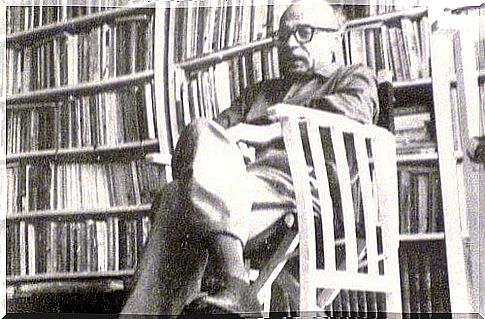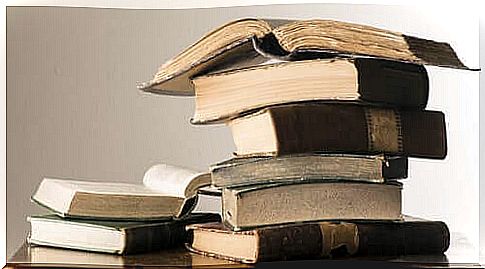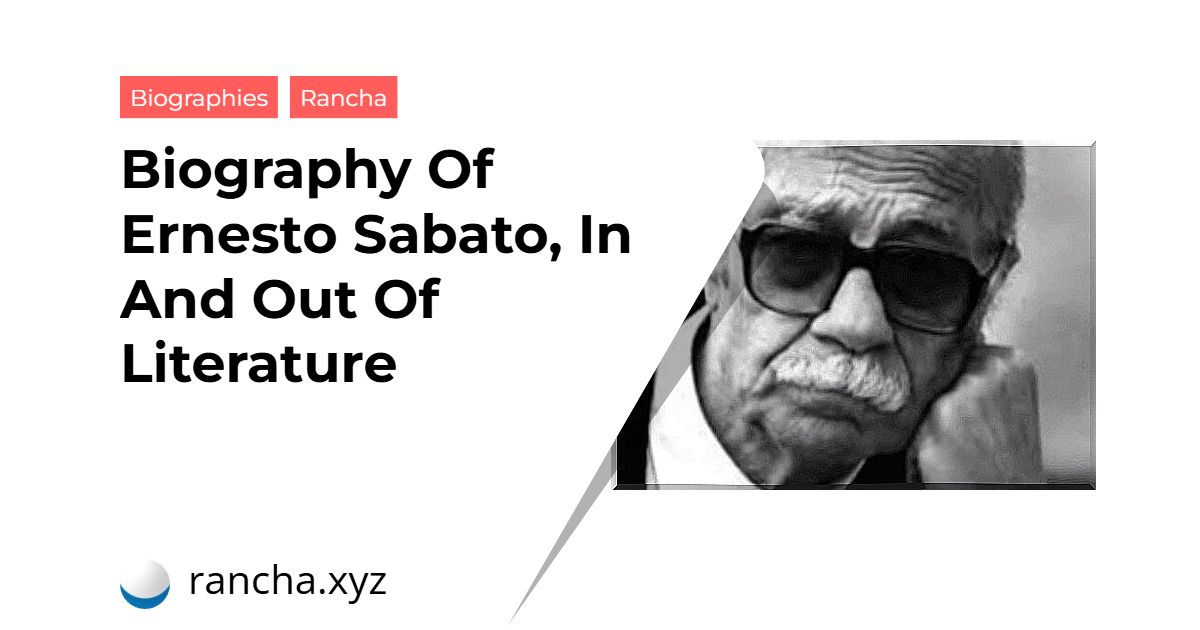In this article, we will present a brief biography of Ernesto Sabato, a good example of an intellectual for someone who knows no borders. He won us over with his work and also with his unique speeches.
The Argentine author managed to make the world fall in love with him through his words, but he also ventured into other fields, such as the scientific one.
Thus, we could define him as a versatile man who, in addition to delving into literature, made great contributions to science and embraced philosophy.
In every field through which he passed, he left his mark. Therefore, we want to dedicate an article to explore his life, part of his work and his countless contributions.

Ernesto Sabato’s Biography
Ernesto Sabato was born on June 24, 1911 in Rojas, Argentina. He was born into a middle-class family of Italian origin and was the penultimate of a total of eleven siblings.
He spent his early student years in Rojas, but later moved to La Plata to finish high school. After that, he began studying Physics at the University of La Plata. During his stay, he met the woman who would be by his side for the rest of his life, Matilde Kusminsky Ricther.
In 1934, Sabato was sent to Moscow as a delegate to the Communist Party of Argentina. However, on the scale he made in Brussels, he decided to flee. He fled to Paris, a city where he dedicated himself to writing for a while, later returning to Buenos Aires and getting married.
In 1937, he received his PhD in Physical and Mathematical Sciences from the National University of La Plata. After earning his doctorate, Sabato decided to continue his research in Paris. On May 25, 1938, their first child, Jorge Federico, was born.
Just before the start of World War II, Sabato was transferred to Massachusetts. In 1940, he returned to Argentina and devoted himself to teaching at the University of La Plata ; was involved in engineering and graduated in relativity and quantum mechanics.
The shift to writing
It was not until 1943 that he abandoned, in part, the scientific branch to devote himself fully to art. Settled in the province of Córdoba, on a farm without water or electricity. Contributed to magazines and reviewed, writing for a long time.
In the following years, he devoted himself mainly to writing. However, tragedy marked Sabato’s life when his son, Jorge Federico, died in a car accident in 1955. His wife died in 1998.
Sabato lived a long life and died as a result of pneumonia on April 30, 2011, just 55 days before his 100th birthday.
Ernesto Sabato, in addition to writing
Ernesto Sabato is fundamentally recognized as a writer, but as we mentioned earlier, he did not only work in this field. Let’s look at some of his contributions to other disciplines:
- Policy. For a few years he leaned towards socialism; in fact, he was elected a delegate. However, in his last writings and public appearances, he turned away from this current and defended a society based on individual freedom, decentralization and cooperation.
- Physics and Mathematics. He received a grant to carry out research on atomic radiation at the Curie Laboratory in Paris. However, he distanced himself from science after coming into contact with surrealism in Paris.
- Painting. As early as 1970, Sabato thought he had said everything he wanted to say as a writer. In addition, an eye problem forced him to stop reading and writing to immerse himself in the world of painting.
Ernesto Sabato was very close to philosophy. His bond emanated from the importance he gave to knowledge, seeing it as the true source of freedom for the human being.
In this way, he wrote several philosophical articles critical to science because, unlike philosophy, he saw it as a source of dehumanization.
On the other hand, when reviewing the Argentine writer’s life, we can observe a strong inclination towards social, cultural and political issues. Proof of this were the various prestigious jobs he performed, as director of Unesco and at the Ministry of Foreign Affairs, which he resigned due to differences.

Featured works in the biography of Ernesto Sabato
As we said, framing Ernesto Sabato only as a writer would mean not doing him justice, not being entirely faithful to his unequaled intellectual activity. However, there is no doubt that he is world renowned and acclaimed for his writings.
Thus, we’ve compiled a brief selection of some of his most acclaimed works:
- The Tunnel (1948). It is a psychological novel narrated in the first person in which Sabato delves into existentialism. In it, the main character exposes, from prison, the reasons that led him to commit a murder. This novel was rejected by several publishers, but once published, it received high praise, including from important personalities such as Albert Camus.
- On Heroes and Tombs (1961) . Ernesto Sabato wrote this novel when he was 50 years old. It was considered the best Argentine novel of the 20th century. It narrates several arguments in parallel, set in Peronism. Sabato thought about burning him, but thanks to his wife he didn’t.
- Abadon, The Terminator (1974). This work shows a more experimental side of the writer. It is an apocalyptic discourse that recreates important events in Argentina’s history, accompanied by 20th century world dramas.
Articles and recognition
Ernesto Sabato has also published several articles, most of them philosophical. Some politically inclined stand out, such as The Other Face of Peronism: Open Letter to Mario Amadeo , in which Evita Perón and her followers defends.
The recognition of important authors was not long in coming; many praised his work and Sabato was featured in different magazines and interviews. Therefore, it is not surprising that he has received several awards in his career. The most prominent ones were:
- Argentine Society of Writers Grand Prize.
- Best foreign novel in Paris.
- Miguel de Cervantes Award.
Without a doubt, Ernesto Sabato’s biography shows that he was an author who left his mark. His ways of approaching philosophy, science and politics made him an unparalleled author.
With this article, we want to invite you to open a space in your library (if you don’t already have one), to get closer to your figure and your reflections with your wonderful texts.
 rancha.xyz Be free to choose their own route to self-knowledge, health and balance of body and soul.
rancha.xyz Be free to choose their own route to self-knowledge, health and balance of body and soul.




